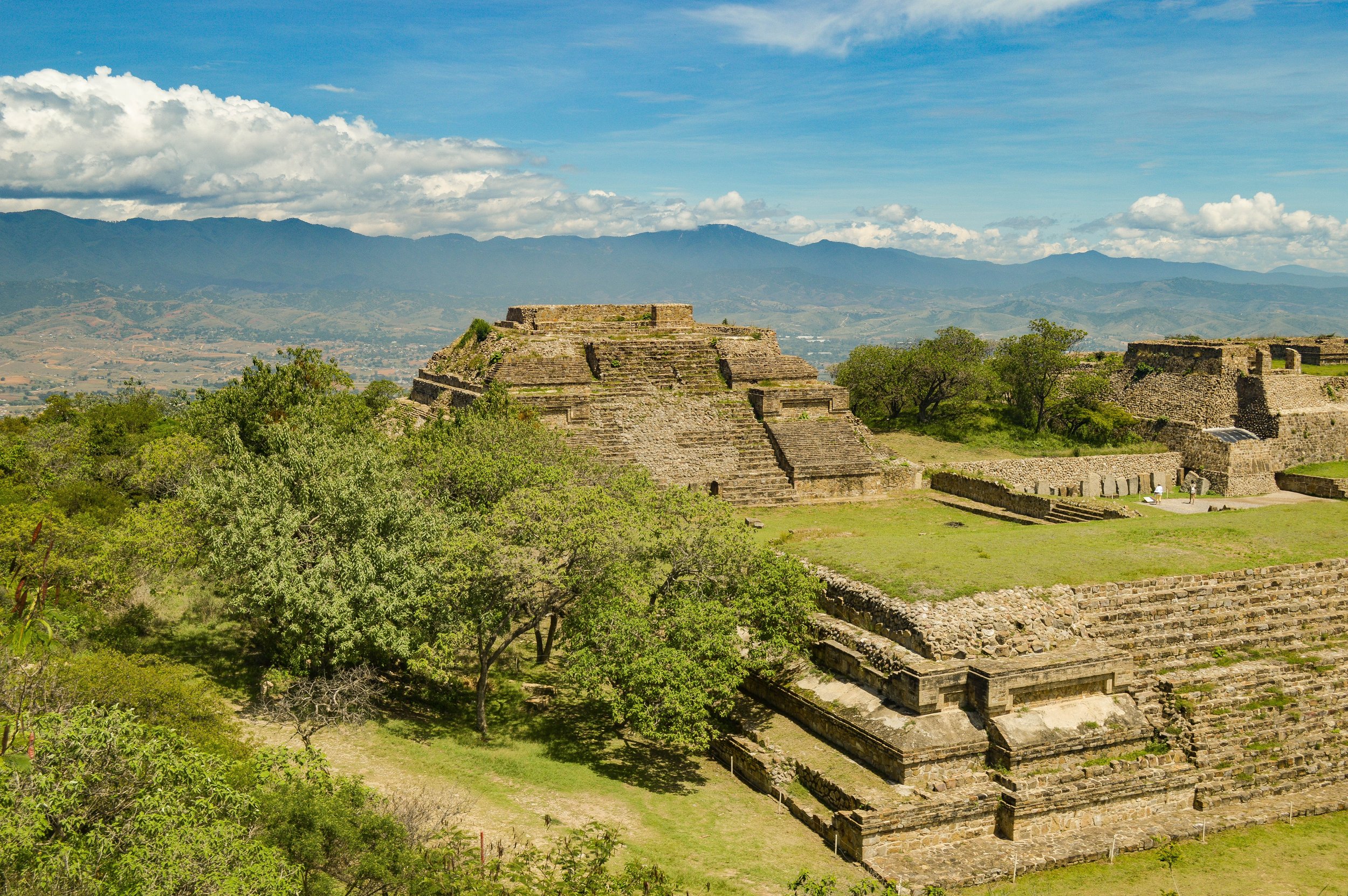The cities that last the longest are the fairest and most participative, says a new archaeological study
The shared central plaza of Monte Alban, a city that lasted for more than 1,300 years. Photo by Matthew Essman on Unsplash
We’re interested in city municipalism, to the extent that it can be a level of governance that brings control of infrastructure and resources closer to citizens and workers. So we were fascinated by this report from Phys.org. It brings us news of an archeological study that makes a direct link between the longevity of cities, and the egalitarian/friendly relations within them:
Some cities only last a century or two, while others last for a thousand years or more. Often, there aren't clear records left behind to explain why. Instead, archaeologists piece together clues from the cities' remains to search for patterns that help account for why certain places retained their importance longer than others.
In a new study published in the journal Frontiers in Ecology and Evolution, researchers examined 24 ancient cities in what's now Mexico and found that the cities that lasted the longest showed indications of collective forms of governance, infrastructural investments, and cooperation between households.
"For years, my colleagues and I have investigated why and how certain cities maintain their importance or collapse," says Gary Feinman, the study's lead author and MacArthur Curator of Anthropology at the Field Museum in Chicago.
In previous studies, Feinman and his colleagues cast a wide net in terms of the cities they looked at, ranging across Mesoamerica over thousands of years. They found a broad pattern of societies with good governance that fostered the well-being of their people lasting longer than ones with autocratic leaders and big disparities in wealth…
To a non-archaeologist, looking at ancient ruins and trying to extrapolate what its government was like might seem like an impossible task. But remnants of the cities' buildings, ground plans, plazas, and monuments contain clues.
"We looked at public architecture, we looked at the nature of the economy and what sustained the cities. We looked at the signs of rulership, whether they seem to be heavily personalized or not," said Feinman. Art and architecture celebrating larger-than-life rulers point to more autocratic or despotic societies, whereas the depiction of leaders in groups, often masked, is more indicative of shared power arrangements.
Feinman and his co-authors, David Carballo of Boston University, Linda Nicholas of the Field Museum, and Stephen Kowalewski of the University of Georgia, found that among the 24 ancient cities they analyzed, the ones with more collective forms of governance tended to remain in power longer than the autocratically ruled cities, sometimes by a thousand years. However, even among places that likely had good governance, some cities outlasted others.
To get at why these similarly governed cities fared differently, the researchers examined other aspects of their makeup including infrastructure and indications of household interdependence. "We looked for evidence of path dependence, which basically means the actions or investments that people make that later end up constraining or fostering how they respond to subsequent hazards or challenges," says Feinman.
Early efforts to construct dense, interconnected residential spaces and the construction of large, central, open plazas were two of the factors that the authors found contributed to greater sustainability and importance of the early cities.
More here. Original paper is here.

